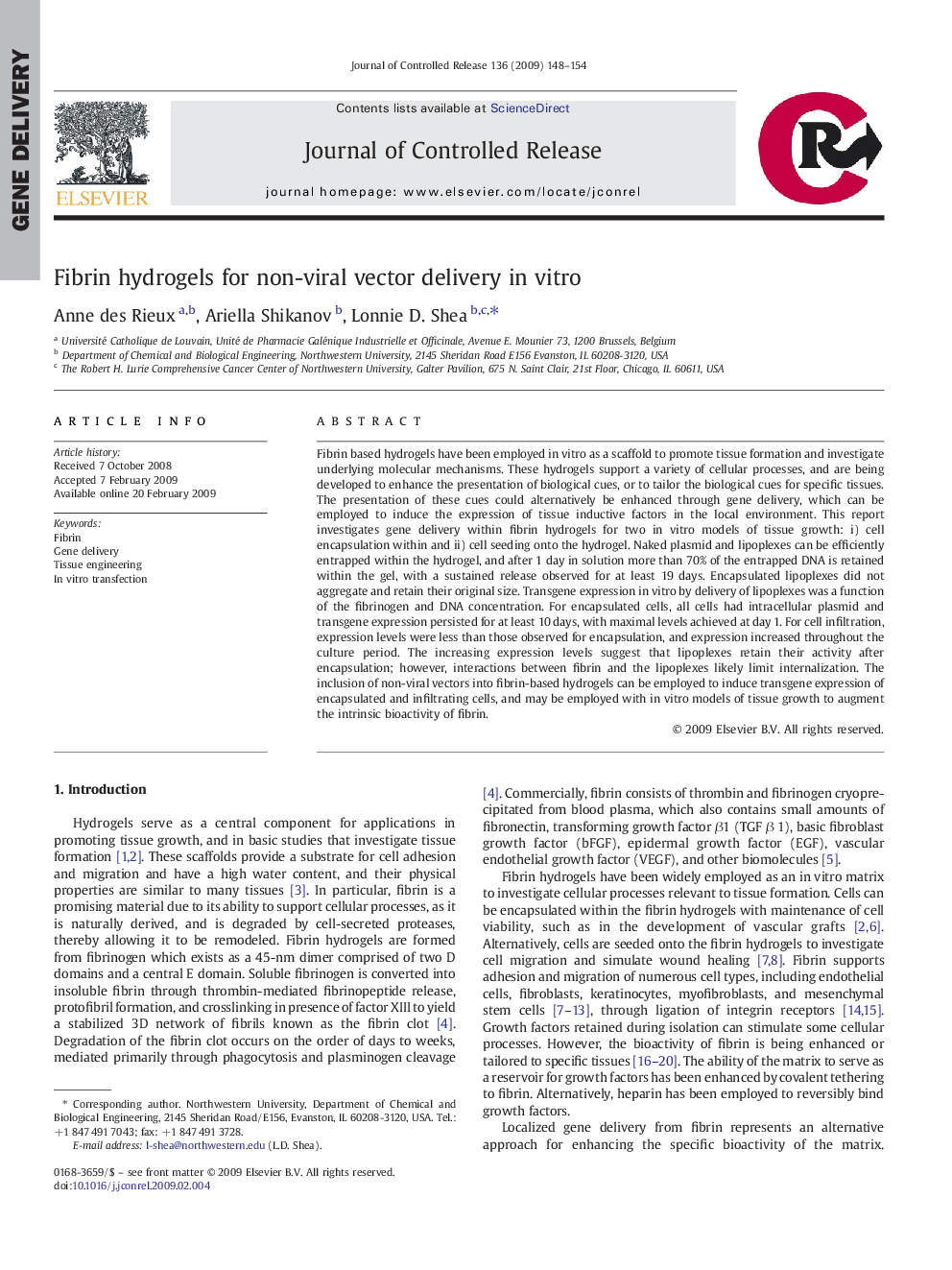| کد مقاله | کد نشریه | سال انتشار | مقاله انگلیسی | نسخه تمام متن |
|---|---|---|---|---|
| 1426258 | 986802 | 2009 | 7 صفحه PDF | دانلود رایگان |

Fibrin based hydrogels have been employed in vitro as a scaffold to promote tissue formation and investigate underlying molecular mechanisms. These hydrogels support a variety of cellular processes, and are being developed to enhance the presentation of biological cues, or to tailor the biological cues for specific tissues. The presentation of these cues could alternatively be enhanced through gene delivery, which can be employed to induce the expression of tissue inductive factors in the local environment. This report investigates gene delivery within fibrin hydrogels for two in vitro models of tissue growth: i) cell encapsulation within and ii) cell seeding onto the hydrogel. Naked plasmid and lipoplexes can be efficiently entrapped within the hydrogel, and after 1 day in solution more than 70% of the entrapped DNA is retained within the gel, with a sustained release observed for at least 19 days. Encapsulated lipoplexes did not aggregate and retain their original size. Transgene expression in vitro by delivery of lipoplexes was a function of the fibrinogen and DNA concentration. For encapsulated cells, all cells had intracellular plasmid and transgene expression persisted for at least 10 days, with maximal levels achieved at day 1. For cell infiltration, expression levels were less than those observed for encapsulation, and expression increased throughout the culture period. The increasing expression levels suggest that lipoplexes retain their activity after encapsulation; however, interactions between fibrin and the lipoplexes likely limit internalization. The inclusion of non-viral vectors into fibrin-based hydrogels can be employed to induce transgene expression of encapsulated and infiltrating cells, and may be employed with in vitro models of tissue growth to augment the intrinsic bioactivity of fibrin.
Transfection profiles in fibrin hydrogels for (A) encapsulated cells and (B) infiltrating cells. Cellular uptake of DNA is influenced by vector interactions with fibrin.Figure optionsDownload as PowerPoint slide
Journal: Journal of Controlled Release - Volume 136, Issue 2, 5 June 2009, Pages 148–154